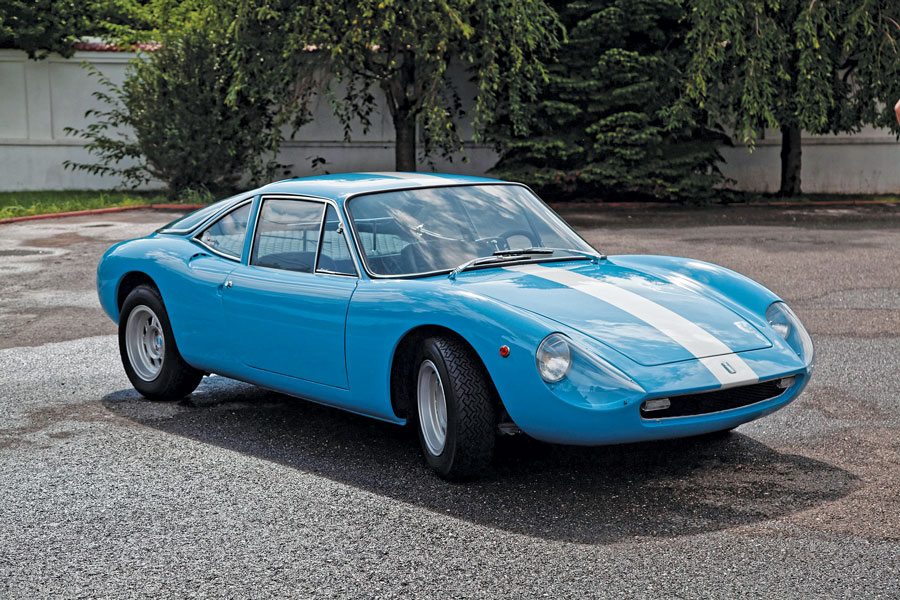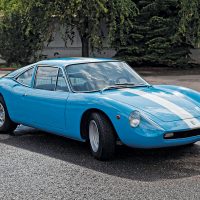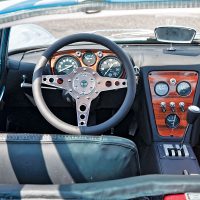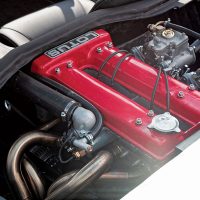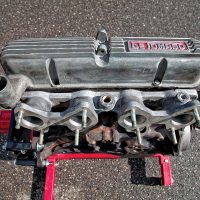
SCM Analysis
Detailing
| Vehicle: | 1966 DeTomaso Vallelunga |
| Years Produced: | 1964–67 |
| Number Produced: | 53 |
| Original List Price: | $164,500 |
| Tune Up Cost: | $650 |
| Chassis Number Location: | Stamping on frame member, right rear corner of engine compartment, data tag in front compartment on bulkhead |
| Engine Number Location: | Intake side of block |
| Club Info: | None |
| Alternatives: | 1960 Porsche 356 GTL Abarth, 1964 Matra Djet II, 1964 Alfa Romeo Giulia SS |
| Investment Grade: | C |
This car, Lot 678, sold for €321,840 ($368,282), including buyer’s premium, at the Artcurial Motorcars Monaco sale held July 21, 2020.
Longtime readers might recall that I have written about this Vallelunga before on these pages (October 2015). I am a big fan of the model, not least because it epitomizes the spirit of mid-1960s Italy: imaginative, carefree and effortlessly stylish. Even if the Vallelunga might not be the greatest car, it has enough qualities that can catch the heart, which is key to the appeal of a collector car.
Indeed, it was quite smart of DeTomaso to abandon the Vallelunga and move on to the Mangusta. This led to a much larger market, that of the folks to whom more power is never enough. In a word: Americans. The Vallelunga simply didn’t have the grunt or the in-your-face presence required to make a real impression in the U.S., and history has proven this path to be the correct one.
What a project
Our subject car is more interesting for what research has apparently revealed and the effect it had on value. When this car was sold at Artcurial in Paris back in 2015, it was as a restoration project. In addition, the “chassis number” listed was not a DeTomaso one, but that of the Ford Kent engine which powered it. There were strange variations in bodywork and trim from the standard car as well, raising more questions than answers. Well, answers were found, and they had the potential to be game-changing.
The correct “VL” prefix number was discovered during the restoration and the translated catalog description noted that “it is believed that Vallelunga numbers starting with ‘VL16’ correspond to a special ‘Competizione’ series.” The original French listing, however, more directly translates as “According to certain sources…” which is not quite the same. Regardless, this is an interesting possibility, and based on that, the seller made the choice of removing the Kent engine and replaced it with a much superior twin-cam Lotus unit, as was said to have been fitted in the competition model in period. The Ford Kent unit was included as well.
The painting of the car in DeTomaso colors — apparently the original ones — was a good choice. They suit the shape well, and this gives the car a great historical appeal. From the catalog images, the car seemed to be finished to a generally good level, with some exceptions in the soft trim of the interior and engine compartment. Although it is likely that the original build details were not terribly refined. Regardless, the amount of work done since 2015 is considerable.
Money matters
The last time this car was sold at auction by Artcurial, in June 2015 in Paris, the exchange rate was practically at par; $1.08 bought €1, which was quite nice for U.S. collectors. I mention this because I feel it is vital to consider currency variations when looking at the character of a transaction. In 2015, the Vallelunga sold for €226,480, or $256,942. This time it brought $111,340 more — but only €95,360 additional in local currency. I’ve supervised many restorations in the U.S. and Europe, and given the state of the car when purchased compared to when it was sold, I can state with some certainty that the restoration costs may have been recouped, but with the commission paid, it is probably quite likely that a loss was realized on the car.
If they are realistic, no one consciously enters into a restoration of this sort with a car of this type with the intention of realizing a profit. It is possible that the idea of this being one of the few “competition” examples may have led the seller to believe it might realize a significant multiple over the market rate. That didn’t happen, although s/n VL1612 did set a new record price for the model, €40,000 over the last high sale, which occurred in 2018.
I’m not sure that the special “competition” model status applied to this car really made that much of a difference in the result. It was by all standards an appealing car, but given the challenges that can come when power meets the somewhat flexible chassis, let’s hope the Lotus engine isn’t too highly tuned.
In profiling this very car back in 2015, I wrote, “Speaking with collectors who have long experience with these cars, it was agreed that it would conservatively require $100k–$175k to bring this example back to where it deserves to be. As the best restored Vallelungas have sold for $175k–$225k, it seems as if this buyer might expect this model to appreciate into Mangusta $300k territory.”
And so it did indeed sell there, while Mangustas in the past few years have sunk below that level. While I love the Vallelunga, the market nonetheless remains a thin one for this very special car. It takes someone who really appreciates the discreet charms of an almost unknown vehicle and for whom the explanation of what it is and what it means will be as enjoyable as the driving experience. Alas, there are few of us in the world. Unless more people have the opportunity to get to know the Vallelunga better, it’s not likely to set the market afire anytime soon. This was all the money we might have expected this car to bring, and I hope the seller was more than satisfied. ♦
(Introductory description courtesy of Artcurial.)
